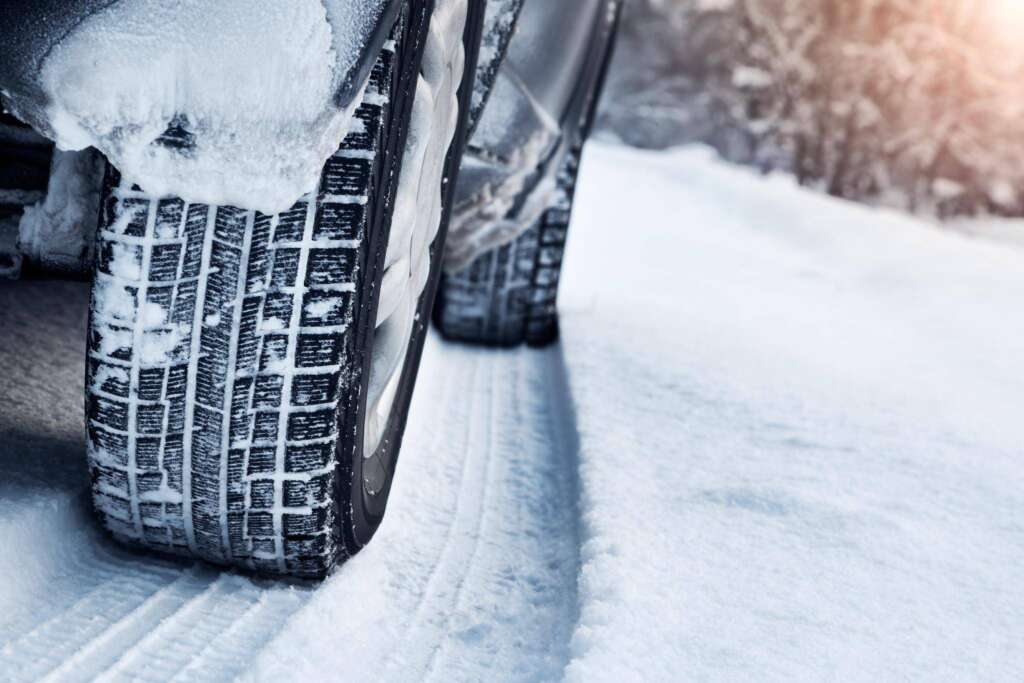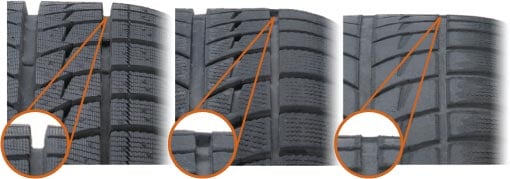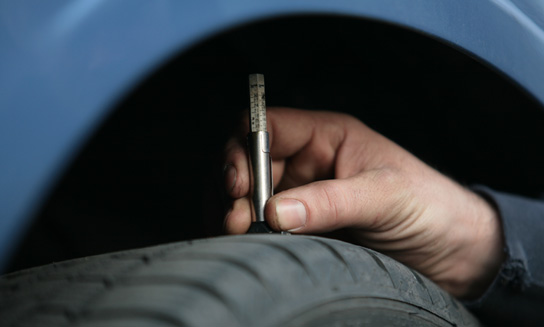Are your winter tires still good?
Many of us switch to winter tires for improved handling in the snow and ice, but over time they wear down and the rubber becomes stiffer so they lose their advantage over regular tires. Following our article last month on the costs and benefits of winter tires (https://sukhuinsurance.ca/resource-centre/winter-tires-and-your-auto-insurance/), this month we’ll discuss some indicators on whether our winter tires are still good. Most of us know to check for damage and if the treads are deep enough, but it’s also important to look at the date codes on the side of the tires as the age also matters.
Tread depth matters
Winter tires have deeper treads than summer tires, and are designed that way to compress the snow out of the way to get better traction on the ground underneath. New winter tires have between 8mm and 9.5mm of tread, or between 10/32 inch to 12/32 inch, depending on manufacturer and model. In Ontario the Ministry of Transport stipulates the legal minimum tread to be 1.5mm (https://www.ontario.ca/document/official-mto-drivers-handbook/maintaining-your-vehicle#section-2) which is about 2/32 inch, but you certainly don’t want to wait until your treads reach that depth as they would no longer be good in snow and ice.
The coin test
The more precise way to measure your tread depth is with a depth gauge, which is a special tool with feet to stand on the outside edge of the tread and a ruler that protrudes to the base of the tread. However it’s not necessary to buy one and we can tell approximately how much tread is left using something in our wallet!
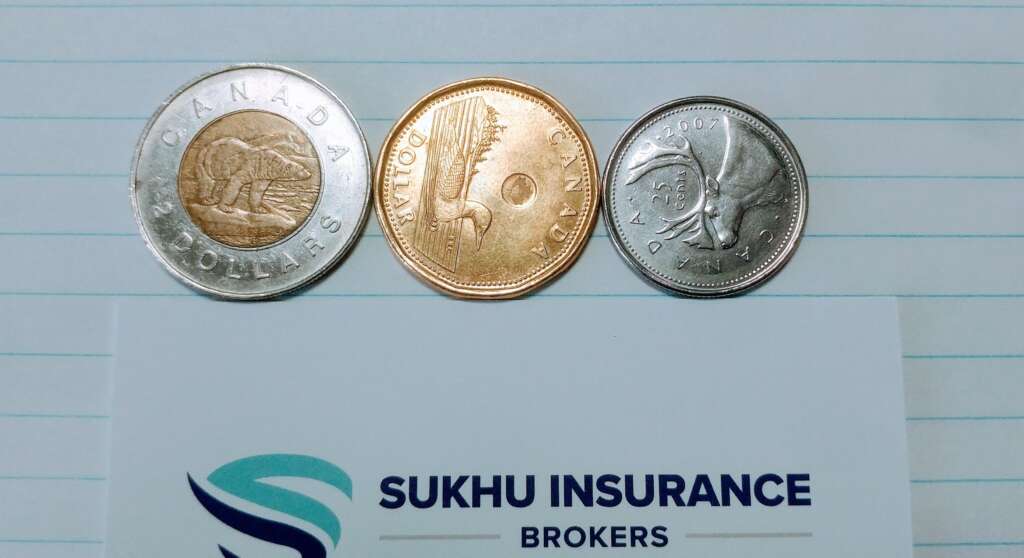 Most of us will have either a toonie, loonie, or quarter in our pocket, and these can give us an approximate indicator on how much tread we have left. The basic premise is to insert the coin into the groove, and see how much of the coin is hidden by the remaining tread. Just make sure to keep the coin straight and look straight at the edge of the tread, as your readings may vary depending on your viewing angle.
Most of us will have either a toonie, loonie, or quarter in our pocket, and these can give us an approximate indicator on how much tread we have left. The basic premise is to insert the coin into the groove, and see how much of the coin is hidden by the remaining tread. Just make sure to keep the coin straight and look straight at the edge of the tread, as your readings may vary depending on your viewing angle.
 With a new tire, the treads will be deep and will reach the bear’s feet on the toonie, cover the front of the loon’s neck on the loonie, and cover the moose’s eyes on the quarter.
With a new tire, the treads will be deep and will reach the bear’s feet on the toonie, cover the front of the loon’s neck on the loonie, and cover the moose’s eyes on the quarter.
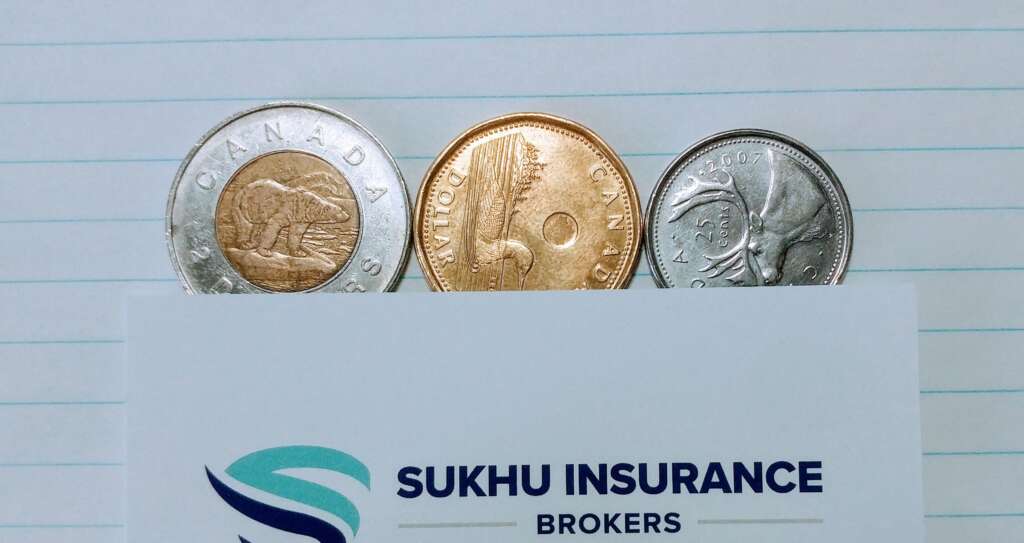 At approximately 50% wear, the tread will cover the nickel part of the toonie, reach the tip of the loon’s beak on the loonie, and reach the moose’s nose on the quarter. You might want to consider shopping for a new set of tires by next season.
At approximately 50% wear, the tread will cover the nickel part of the toonie, reach the tip of the loon’s beak on the loonie, and reach the moose’s nose on the quarter. You might want to consider shopping for a new set of tires by next season.
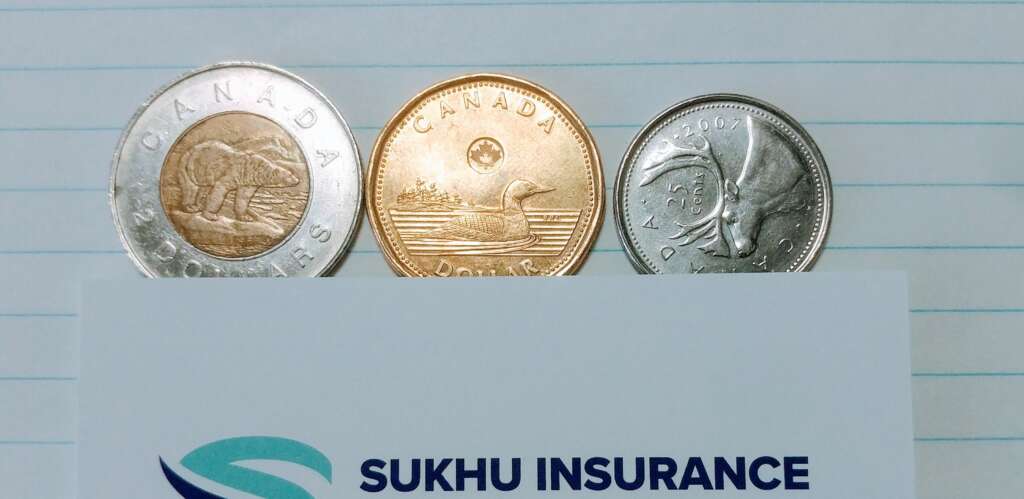 It’s time to replace the tires when you can’t cover a full letter of the “DOLLARS” on the toonie, the “DOLLAR” on the loonie, and the “CANADA” on the quarter. Your winter tires are no longer effective as winter tires, and are on the verge of not being road-worthy.
It’s time to replace the tires when you can’t cover a full letter of the “DOLLARS” on the toonie, the “DOLLAR” on the loonie, and the “CANADA” on the quarter. Your winter tires are no longer effective as winter tires, and are on the verge of not being road-worthy.
The age of the rubber
 In our previous article about winter tires, we discussed the fact that the rubber has a different composition than normal tires that helps the rubber stay flexible in colder temperatures. The flexibility is a key component to its effectiveness and as they age the rubber becomes less flexible so the tires are less effective in snow and ice. In fact the rubber may be most effective in winters during the first 6 years, and tire manufacturers suggest you have someone inspect the tires when they reach 5 years or older (https://www.michelin.ca/en/howLongTireLast.html). To check the age there is a DOT code on every tire and the last four digits indicate the week and year it was manufactured. For example the tires above were manufactured on the 38th week of 2011, and are thus 9 years old at this point and should definitely be inspected every year. Other factors come into play such as if you store your winter tires outdoors without any cover, as UV rays from the sun will age them them quicker than if they were stored in tire bags and kept indoors.
In our previous article about winter tires, we discussed the fact that the rubber has a different composition than normal tires that helps the rubber stay flexible in colder temperatures. The flexibility is a key component to its effectiveness and as they age the rubber becomes less flexible so the tires are less effective in snow and ice. In fact the rubber may be most effective in winters during the first 6 years, and tire manufacturers suggest you have someone inspect the tires when they reach 5 years or older (https://www.michelin.ca/en/howLongTireLast.html). To check the age there is a DOT code on every tire and the last four digits indicate the week and year it was manufactured. For example the tires above were manufactured on the 38th week of 2011, and are thus 9 years old at this point and should definitely be inspected every year. Other factors come into play such as if you store your winter tires outdoors without any cover, as UV rays from the sun will age them them quicker than if they were stored in tire bags and kept indoors.
Other things to consider
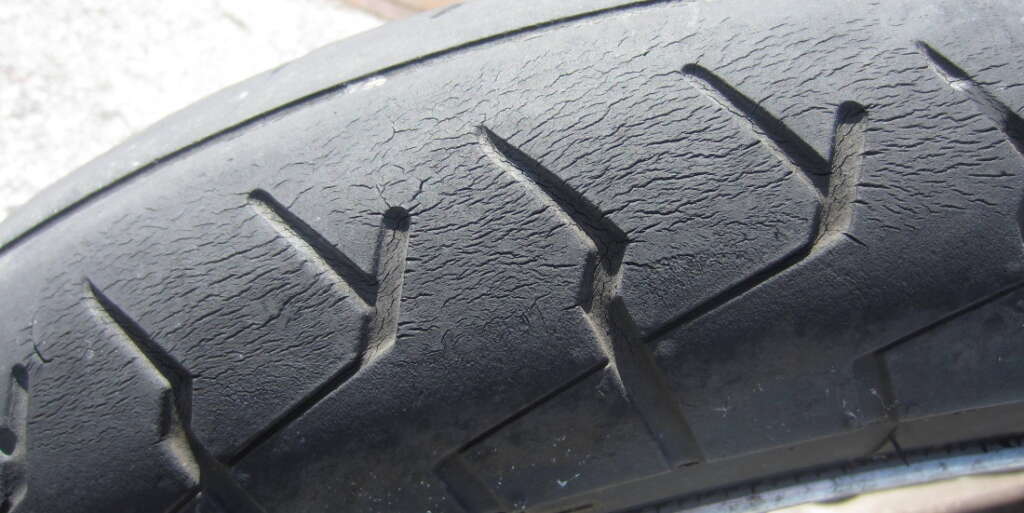 Aside from the age and tread depth, you should also inspect for any damage such as cracks which may indicate dry rot, or uneven wear patterns which may indicate other mechanical issues such as alignment. Your mechanic/tire shop should rotate the tires for you every season so that there is a balance between tires used on the front vs back, and left vs right. Also some tires have wear indicators built into them that show when the treads are worn down. Not all tires have them and even if they do, they may only indicate the bare minimum tread so it’s always a good idea to measure the depth in other ways.
Aside from the age and tread depth, you should also inspect for any damage such as cracks which may indicate dry rot, or uneven wear patterns which may indicate other mechanical issues such as alignment. Your mechanic/tire shop should rotate the tires for you every season so that there is a balance between tires used on the front vs back, and left vs right. Also some tires have wear indicators built into them that show when the treads are worn down. Not all tires have them and even if they do, they may only indicate the bare minimum tread so it’s always a good idea to measure the depth in other ways.



